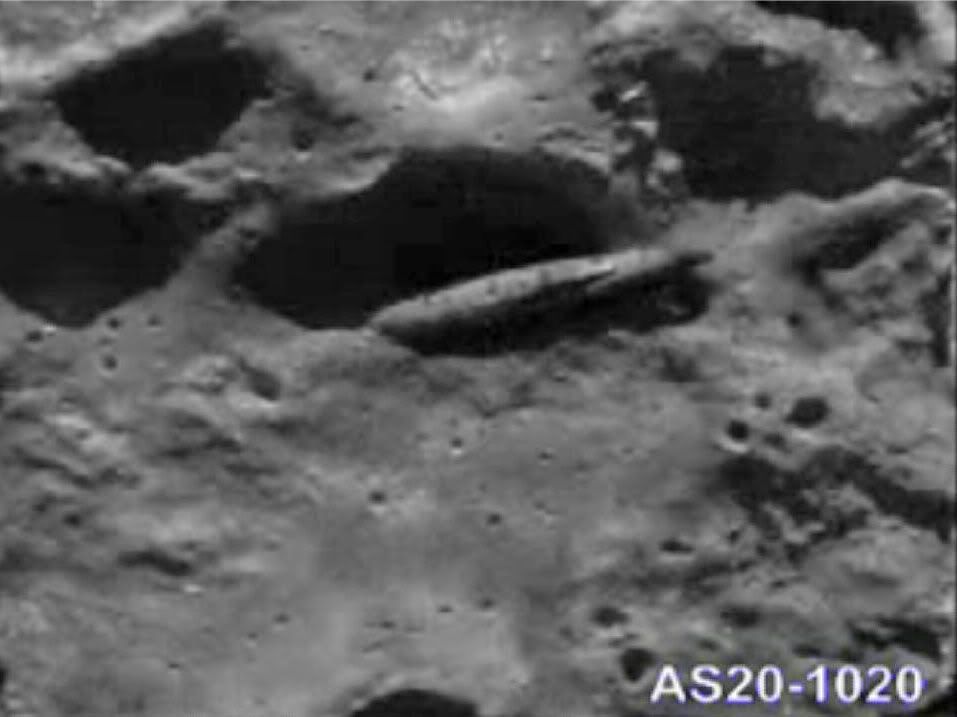
A magazine interview conducted by Luca Scantamburlo was done through a YouTube email account in May 25, 2007. He says his name is William Rutledge, born in 1930 in Belgium. He is an American citizen, but is not accustomed to speaking in English anymore since 1990 when he moved from Europe to Rwanda. He has learned Kinyarwanda and uses French and sometimes German because Rwanda is a former Belgium-German Colony. He said that he moved to Rwanda because of a woman he met. He says, “NASA didn’t employ me, USAF did.” He worked an area that studies foreign technology, studying Russian items only, like the N1 project, AJAX plane project and the Mig Foxbat 25. Rutledge had previously worked on the Gemini project and the USAF remembered that, so they chose him later for Apollo 20. He says he was chosen, “because I was one of the rare pilots who didn’t believe in God.” For some reason, he said that little thing was the deciding factor making him an astronaut. Rutledge says that there were 300 people working on the USAF in Vandenberg, California. During this mission there was a Russian-American collaboration to make the mission happen.
Rutledge claims that the Apollo 18 mission was the Apollo-Soyuz project that took place in 1975. Apollo 19 however, had a loss of telemetry for some unknown reason, ending mission data sent back. It apparently hit a meteorite in orbit. Hmm…I believe the odds of a moving object hitting another moving object is far less likely than a meteorite hitting a stationary object, yet this could have been a warning sent from lunar inhabitants. Apollo 18’s goal was to send a rover to explore the roof of a ship by climbing on the Monaco hill and entering an opening made by those who explored the ship far before the USAF ever arrived.
When Rutledge was speaking about the alien ship and lunar city on the moon, his descriptions sent ones imagination whirling. “We entered the two ships on the mission. One was a cigar shaped mother ship, the other a triangular-shaped ship. Most the mission fell on exploring the mother ship, which NASA believed crossed the universe at least 1.5 billion years ago. We witnessed many signs of biological life forms inside, like old remains of unusual plants in the section that apparently contains the engine for the craft. Another biological species came in the shape of triangular rocks that emit droplets of a yellow liquid that has medical properties. We found signs of extra-solar creatures. We discovered the remains of many tiny bodies measuring about 10 cm across. These tiny creatures were living in a complex network of glass tubes all along the interior of the ship. The most startling of all the discoveries was when we came upon two human like bodies, one of which was totally intact even after over a billion years on the ship.” The one intact EBE was named by Leonov or himself (he was unsure) calling her Mona Lisa. He said the EBE (Extraterrestrial Biological Entity) was female and close to 1.65 meters tall. She had genitals, hair and six fingers. Possibly meaning their mathematics may have been based on a dozen. It was apparent that her function was to be a pilot. She had piloting devices attached to her fingers and eyes, yet had on no cloths. She had two thin cables that ran into here nose area, but note she had no nostrils. Leonov undid the devices over her eyes, causing secretions of bio liquid to shoot out and freeze from the mouth, nose, eyes and other parts of the body. Some areas of the body seemed in unusually good condition for its age. He stated, “As we told mission control, condition seemed not dead, not alive.” A thin transparent coating protected her hair and skin. We didn’t have a medical background so Leonov and I made a simple test. We decided to take off our bio equipment and attach it to the EBE so that it could send the telemetry back to Mission Control Medical experts. She is now on Earth and she is not dead, but I want to post other videos of her before I talk further about her. We also fund a second body that appeared to be destroyed. We took the head on board. The color of its skin was a pastel blue or blue-grey. The skin had a bit of unusual inscription over the eyes and forehead. There was a strap without inscription around the head. The cockpit of cigar shaped mother ship was full of calligraphy and was made by lengthy hexagonal tubes.
The actual age of the spacecraft was 1.5 billion years old, which was confirmed during exploration. We discovered fragments of the original crust, anorthosite, spirals in feldspathoids, apparently came from the impact which formed the Izasak D Crater. “The density of the meteor impacts on the ship validated the age, also the little white impacts on the Monaco hill at the West of the ship,” said Rutledge.
The city that we discovered was actually named on Earth. It was decided that this city would be called Station One, but once astronauts got a close look at it, they realized that it was since long abandoned and turned to worthless piles of scrap, except one taller larger building we called the cathedral. That one seemed intact. (The Cathedral is clearly shown in detail on the video of the lunar city on YouTube). There was a writing or calligraphy deeply pressed into every piece of metal. We believed the ship and the city were similar in age, but it is a very tiny part of the whole. On the rover our telephoto lens makes the alien structures look bigger than normal.
No comments:
Post a Comment